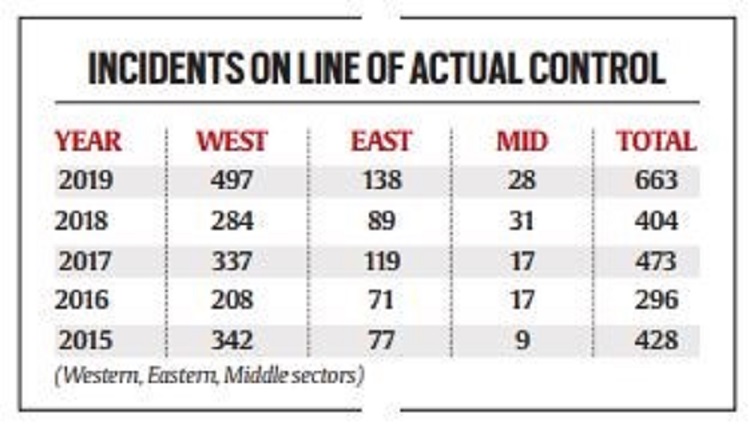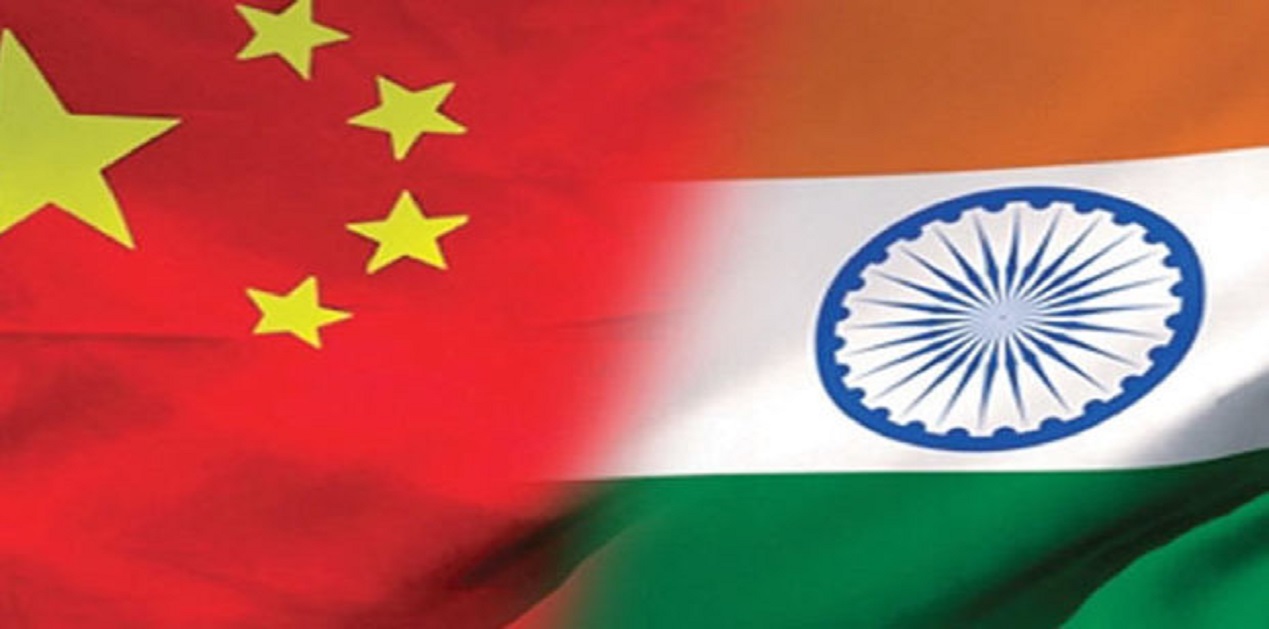China has accused India of crossing and violating the LAC. On 5 May the Chinese media reports said: On the May 18th, a reporter from the Global Times (in Chinese) learned from sources that the Chinese border guards have strengthened control over the Galwan Valley area and resolutely responded to the infringement of the Sino-Indian line to build facilities. According to relevant sources, since the beginning of May, the Indian side crossed the line into the Chinese territory and entered the Chinese territory, began to construct barriers, and blocked the normal patrol of the Chinese border defense forces. They deliberately provoked the incident and tried to unilaterally change the status of border control. The Galwan Valley region is China’s undisputed territory. The above actions of the Indian side seriously violated the relevant agreements on the border issue between China and India.
China’s People’s Liberation Army (PLA) troops crossed the LAC and entered Indian territory sometime in late April 2020 in north Sikkim at Naku La; at one point at Hot Springs and two locations to its northwest at Patrolling Points 14 and 15; and at three points on the Galwan River in the Galwan Valley where they are reported to have pitched close to a hundred tents; and at a point called Gogra. They are now reported to be digging defences, preparing bunkers and moving in heavy vehicles. They have moved up artillery guns and reinforcements from the rear to their side of the LAC. Efforts by local commanders, including Brigadiers from higher formations, have not resulted in defusing the situation. One press report said the PLA has reportedly stopped responding to Indian requests for flag meetings under the mutually established protocol termed the “Border Management Posture” (BMP). These are indications that the PLA troops are preparing for either a long stay or to build near permanent defences while protracted negotiations continue.
From the time these reports surfaced, there have been clear indications of premeditation and preparation by the Chinese. First, the involvement of the large number of troops, almost 250, is very unusual as routine patrols are normally between 10-30 people in strength. Reports also said that the PLA troops were carrying batons with metal studs which is odd, but suggests they had planned to if possible, avoid the firing of weapons which would lead to immediate escalation. The quick arrival of Chinese helicopters, of which the PLA has a large number, deployed with the South Xinjiang Military District and Ngari (Ali) Military Sub-District, at the point of confrontation on Pangong Tso (near Chushul) points to a high state of readiness of the PLA.
The actions would certainly have been authorised and coordinated at the highest level. The entire 4,057-kms length of the India-China border is under the overall operational jurisdiction of the PLA Western Theatre Command. It is the largest of China’s five Theatre Commands. The areas opposite Ladakh come under the operational jurisdiction of the South Xinjiang Military District (MD) subordinate to the Xinjiang Military Region and directly under the Ngari (Ali) Military Sub-District (MSD) subordinate to it, which exercises jurisdiction over the areas across Ladakh and upto the border with Himachal Pradesh. The area opposite Sikkim, including the area of Doklam (or Dolum), comes under the operational jurisdiction of the Shigatse Military Sub-District (MSD) subordinate to the Tibet Military Region. While there been a change-over of Commanders at both these MSDs, the PLA has posted their predecessors to higher positions in the Military District/Military Region. Care has been taken to ensure that continuity of local experience has been retained at the more senior level thereby facilitating coordinated planning. Pertinent is that among the PLA Western Theatre Command’s tasks is also the safeguarding of Chinese assets and nationals of the CPEC.
There are a number of reasons why China has triggered this tension at this time: (i) Chinese President Xi Jinping is under increased domestic pressure, including unprecedented demands for him to step down, because of his policies and in the wake of mishandling of theCovid-19 outbreak in Wuhan and wants to divert attention, including when the ‘Big Two’ (CPPCC and NPC) plenary sessions are underway. (ii) Chinese President Xi Jinping’s promise of achieving the China Dream includes the ‘rejuvenation’ of China by the hundredth year of the founding of the Chinese Communist Party (CCP) in 2021. This implies reunification of all territories claimed by China. The protests in Hongkong, re-election of the pro-independence DPP in Taiwan, resistance in the South China and East Seas have all created the impression inside China that the leadership is unable to deliver the China Dream.
In order to strengthen his position and that of the CCP, Xi Jinping has since February adopted a noticeably tougher policywith Hongkong, Taiwan and, the areas of transgression are within Indian territories claimed by China. (iii) China sees India getting visibly closer to the US especially after the Covid-19 pandemic. (iv)China perceives the timing as opportune since India and other countries, like the US, France etc., are preoccupied with tackling the Covid-19 pandemic. (v) China has major economic and strategic interests in the larger Aksai Chin area – the Karakoram, CPEC etc. After India issued its revised map showing the correct extent of its territories, China feels its interests are threatened and wants to ‘dig in’ and secure territory it considers its own. It wants to keep the dispute in the area ‘open’. (vi) China has not accepted these territories – where the intrusions have occurred – as Indian territory but as disputed.
Now that it is much stronger and India and the world are preoccupied and grappling with the Covid-19, China could be wanting to grab larger slices of the territories claimed by it. China has, incidentally, over the years been ‘nibbling’ away Indian territory. (vii) China’s moves would, additionally, be welcomed by Pakistan. The possibility that Pakistan made some contribution to these moves cannot be entirely ruled out considering that since March this year an ISI Colonel is posted at China’s Central Military Commission (CMC)’s Joint Staff Department.
Noticeably, the official Chinese media has been quiet on these incidents. The CCP-owned Global Times’ solitary initial article on the incidents at Galwan Valley contained very strong language not perhaps seen since 1962, but it has been silent on the subject thereafter. Chinese Foreign Minister Wang Yi made no reference to this in his press conference on May 24 on the side-lines of the NPC session, though he criticised the United States. There have, however, been reports on the Chinese social media platform Baidu. Interestingly articles justifying China’s so-called historical claims on Ladakh, the Galwan valley and Sikkim, apparently from an official source, appeared on May 5, 6 and 9 afternoon to coincide with the incidents at Ladakh, Galwan Valley and Sikkim.
Little noticed has been the strong and tough response (May 20) from the spokesman of the Chinese Embassy in New Delhi to US Assistant Secretary of State Alice Wells’ recent statement showing support for India. His statement was stronger than that by the Chinese Foreign Ministry spokesman at the weekly press conference in Beijing. Chinese Embassy Counsellor Ji Rong said: “We are firm in determination to oppose separatist activities and safeguard China’s national sovereignty and territorial integrity. We are firm in determination to oppose foreign meddling in China’s internal affairs. We are firm in determination to realise final reunification”.
His statement appears to have inherent warnings against any attempt to rake up the issue of the Dalai Lama; draw close to the US; and oppose Chinese actions on the border.
While reports indicate that there has been no progress in the negotiations thus far, it seems China is prepared for negotiations. Beijing probably intends for these negotiations to be protracted so that they remain in de facto physical control of the areas now occupied. The PLA troops being armed only with metal-studded batons is one such sign as is the silence at the official level. China’s end game would be for PLA troops to not withdraw from the regions now occupied and possibly try to negotiate for a larger area to be handed over. Their rhetoric, articulated since April 2013, staking a so-called historical claim on entire Ladakh and other areas should not be ignored and we should be prepared for them expanding their presence in other areas of strategic importance to them.
APPENDIX
Data from Mr Sushant Singh’s recent tweet:
But in 2019, the year when Prime Minister Narendra Modi and Chinese President Xi Jinping met at Bishkek and Mahabalipuram, there was also a 75 per cent surge in Chinese transgressions in Ladakh — 497 as against 284 transgressions in 2018.

Nearly three-quarters of the transgressions, data since 2015 show, have taken place in the western sector of the LAC, which falls in Ladakh. The eastern sector, which falls in Arunachal Pradesh and Sikkim, witnessed almost one-fifth of the Chinese transgressions.
(The paper is the author’s individual scholastic articulation. The author certifies that the article/paper is original in content, unpublished and it has not been submitted for publication/web upload elsewhere, and that the facts and figures quoted are duly referenced, as needed, and are believed to be correct). (The paper does not necessarily represent the organisational stance... More >>
Image Source: https://live.staticflickr.com/4423/35566474204_5d80e499d7_z.jpg











Post new comment